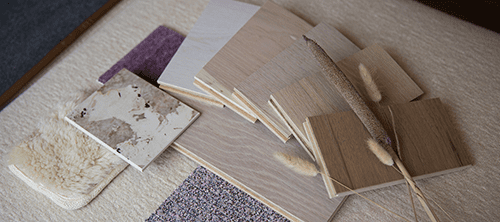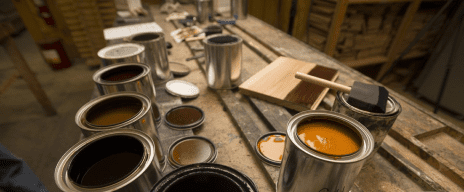Tips for Planning a Successful Old Home Restoration
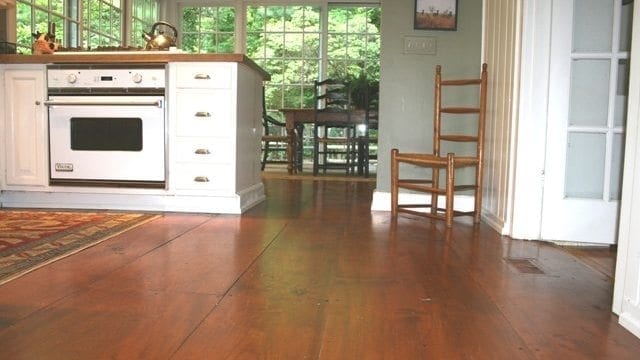
Sixty-seven percent of homeowners plan to do a home renovation project in the second half of 2014, according to the latest Realtor.com home improvement survey. Kitchens and bathrooms are the most popular improvement projects, followed by backyards, patios and exteriors. Twenty-two percent of respondents said their renovation budget was between $2,001 and $5,000. Unfortunately, you’ll burn through this money pretty quickly if you make a major mistake, which is all too easy to do when you’re renovating an older home. Knowing what to do and what to avoid can be the difference between a successful old home restoration project and a time-consuming, expensive disaster.
Plan Ahead
Restoration contractor Aaron Lubeck wrote on FineHomebuilding.com that planning is the step where many projects go awry. One common mistake is skimping on architectural planning in haste to pursue cosmetic renovations or fix structural emergencies. Assuming contractors are aware of your long-term plans when you haven’t provided directions is another common mistake, which can lead to problems such as an appliance getting placed in an attic or basement space you intend to use for something else. Avoid such issues by investing in good architectural planning. Lubeck also stresses the value of documenting the changes you make for the benefit of future use and renovations.
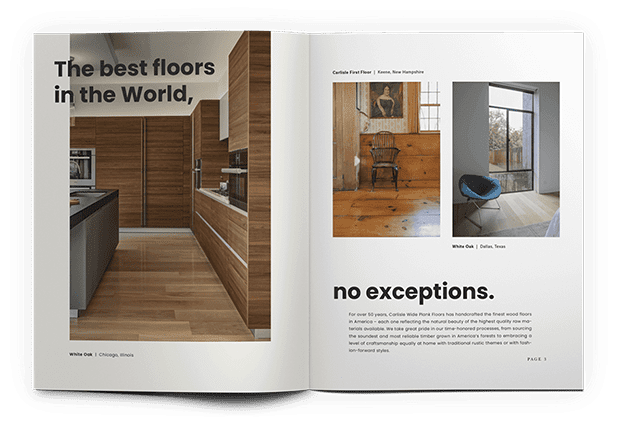
Endless Inspiration for the Floor of Your Dreams
GET DESIGN BOOKFlip With Financial Caution
Flipping an older property can take more planning and work than doing cosmetic changes to the average fixer-upper. Keep an eye out for structural issues that may need to be addressed, such as foundation cracks and sagging roofs, and adjust your purchase price, renovation budget and project time estimates accordingly. Be prepared to spend more money and invest more time than you would on a newer home renovation, and don’t expect to be able to flip the property in just a few months.
Fortunately, financial help is available for old home restoration projects. Possible resources include grants, local foundations, restoration societies and low-interest loans. Don’t forget to check if your project is eligible for Historic Tax Credits, which you can begin researching by visiting the website of the National Trust for Historic Preservation.
Repair vs. Replacement
You may be tempted to replace old windows, but original window designs can be one of the most valuable features of a historic home, and as home restoration expert Scott Sidler explains, most common problems with old windows can be repaired. The pieces of historic windows can be repaired or replaced piecemeal, in contrast to new windows that usually require full replacement or factory repair. Weather stripping and periodic paint coats can be easily added. Similarly, think twice before replacing other historic features such as hand-built doors, hand-blown glass and customized mantels.
Antique vs. Restoration Quality Flooring
If you are remodeling or adding on to an an older home, you may be faced with the need to repair or install new wood flooring. Many people may assume – incorrectly – that when dealing with an older home they must use antique flooring. The fact is that antique flooring is not authentic when you are restoring or remodeling an older home. Antique flooring will have significant color variation, nail holes, cracks, and other antique character from it’s previous life. If you are trying to restore, or match an existing floor it is very unlikely that it has these characteristics, and once installed, it will look quite different.
A better solution than antique flooring, is restoration qaulity flooring, which will be much more similiar to what would have been used originally in the home. The most common species are Long Leaf Heart Pine flooring and Eastern White Pine flooring, like the floor you see below. This floor was crafted in 13-20″ wide boards, just like the original pine floors, and installed in a 200 year old Pennsylvania farmhouse. The designer, and owner of the home, said she was amazed at how authentic this floor looked, even though it wasn’t antique. This was due to the extremely wide board, antique cut nails and the warm stain color that gave the floor an aged patina right away.
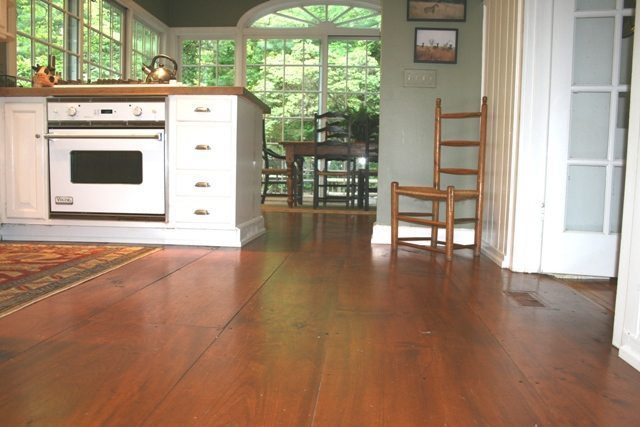
In addition to providing an equally so, if not more authentic look for your home, newly sawn flooring styles are also half the price of their antique counterparts. So you also save a significant amount of money.
Efficiency and Safety Updates
Energy efficiency and safety are a couple areas where old homes may sometimes need to be upgraded. Arrange for a professional blower-door test as the first step toward identifying leaks. For asbestos, the Consumer Product Safety Commission recommends always having a qualified professional handle inspections and repairs, instead of trying to fix it yourself. For both asbestos and lead, the best solution is often encapsulation rather than removal.

